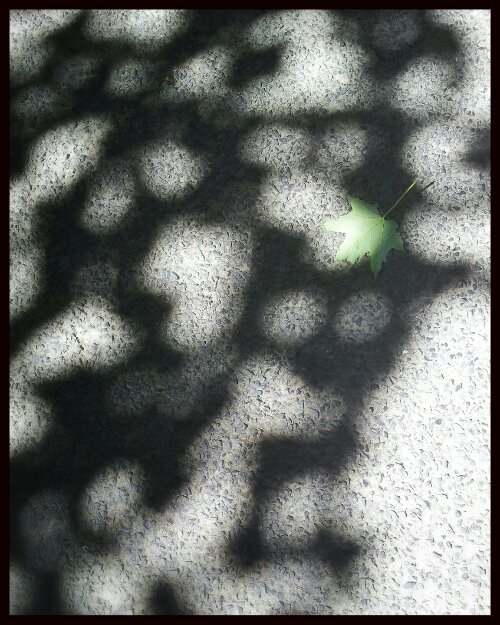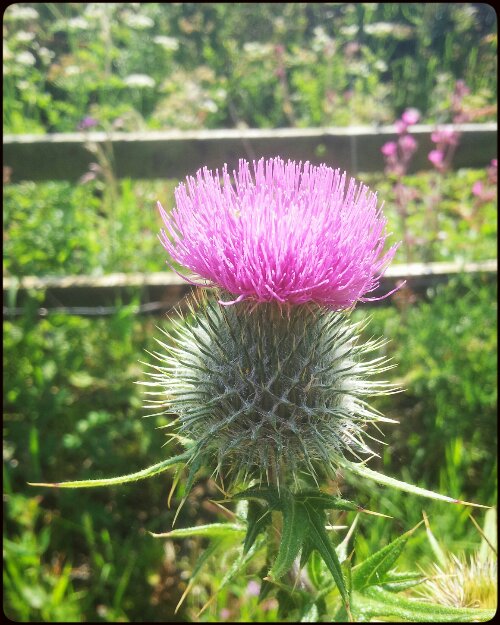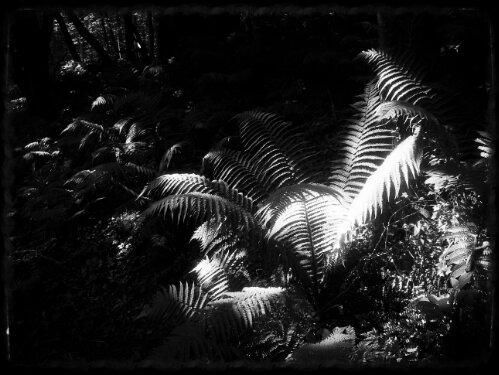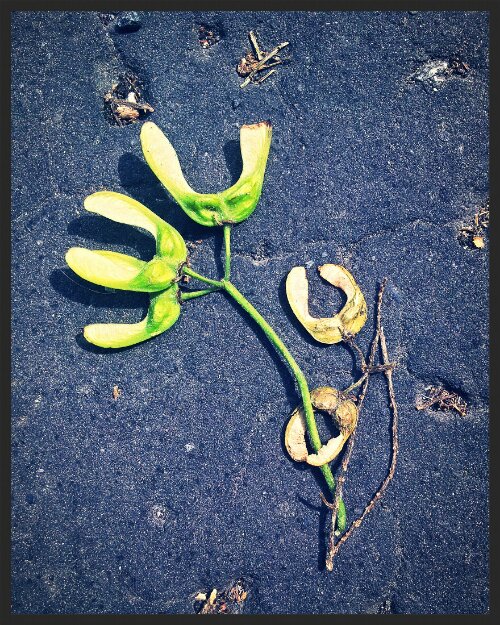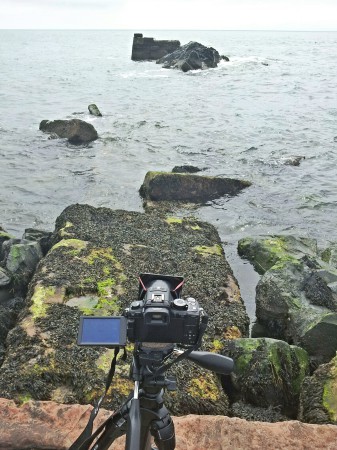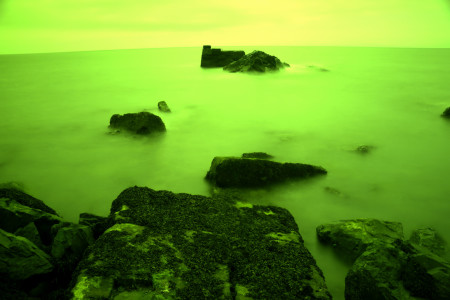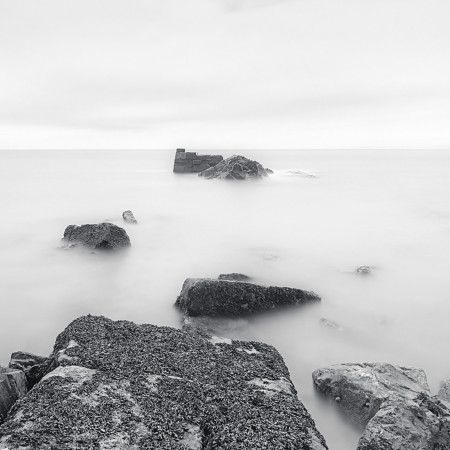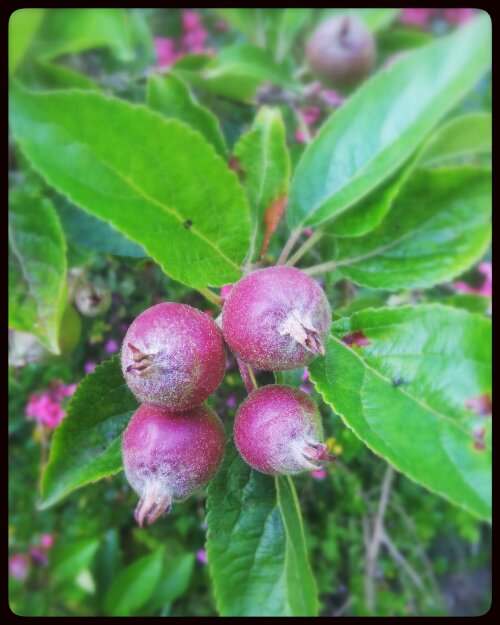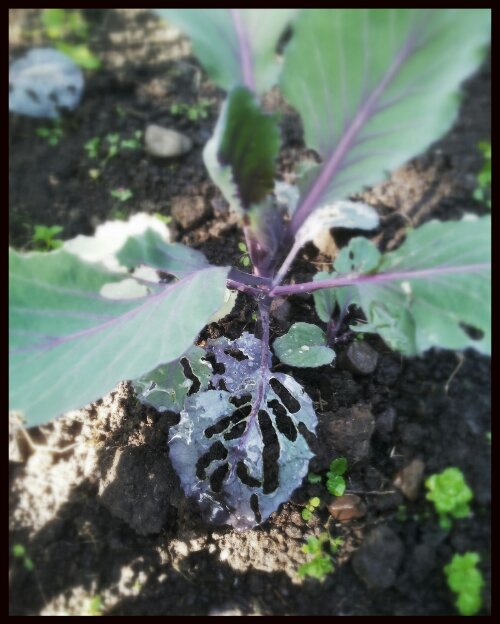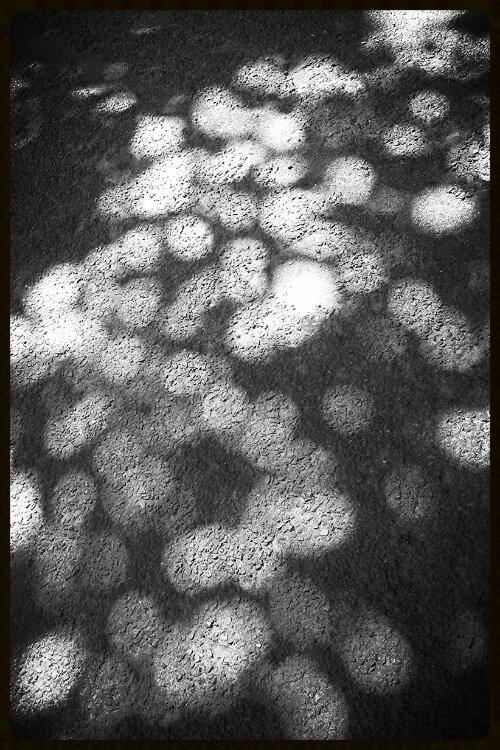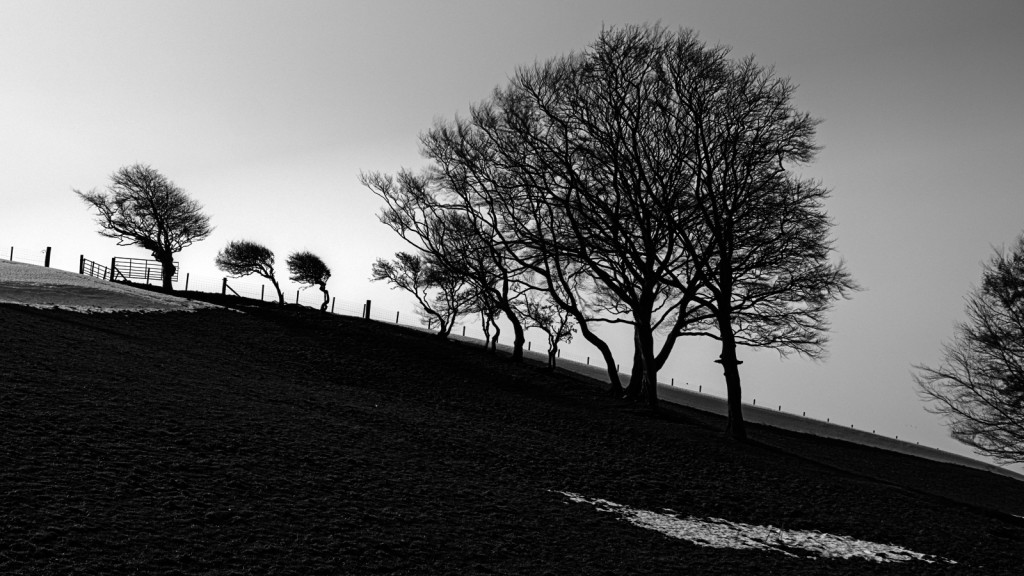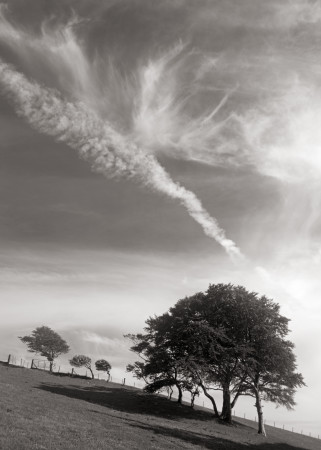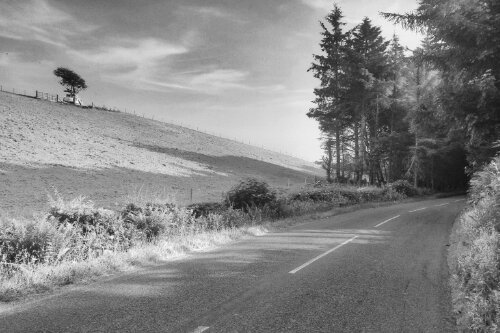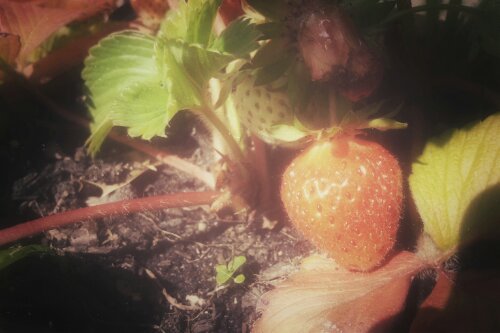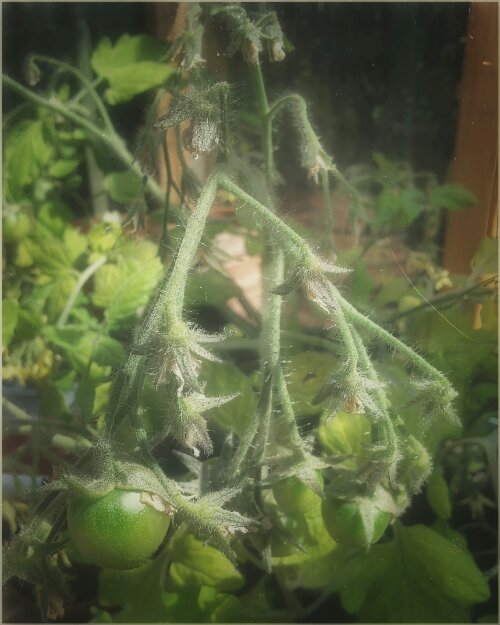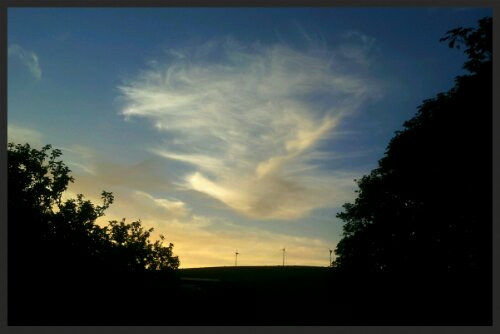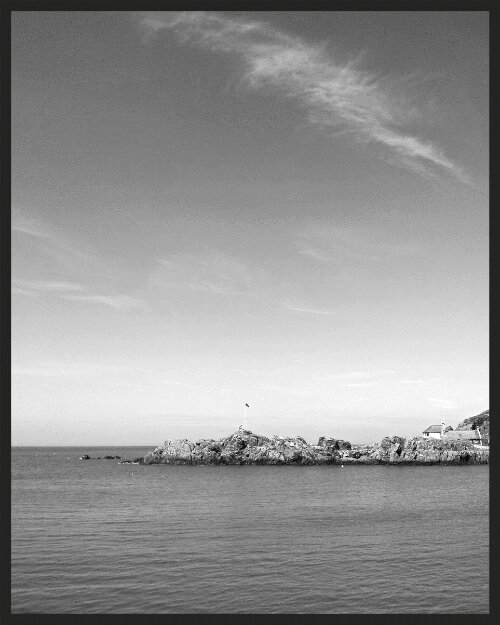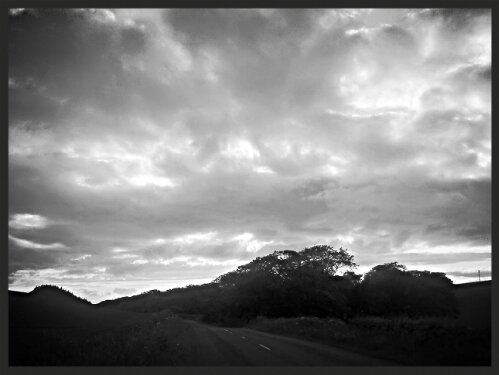More nature’s bokeh – a solitary sycamore leaf basking in the sunlight on the road.
Category Archives: photos
Teasel
Ferns in the light
One of the few New Year resolutions I’ve ever made was this year, and it was to look for photo opportunities characterised as much by areas of dark as by light – a kind of counter to the principle of seeking “good light”, largely because I find the term distasteful, so rather than photography, “writing with light” I hoped to print with dark instead. It’s actually been quite a successful strategy, over that I hope to continue using on occasion, as often as I remember anyway.
After a comment on blipfoto today, I did a bit of research into ferns. Earliest fossils of ferns data back to the Carboniferous period (325Mya), although the more modern species go as far back as the Cretaceous (145Mya). So now we know…
Sycamore
Welding Glass and Rubber Bands
Sometimes, one feels the need to make long-exposure photos (15s+) during daylight. One option is to buy a Lee Big Stopper, Hitech 100 ND1000 or other neutral-density filter, but these are far from cheap. Alternatively, one could stack a bunch of cheap ND filters on top of each other (ND8+ND4 etc), but then the image-quality suffers and there may be significant magenta colour tints. Further, as the degree of filtration increases, the necessity of preventing light-leaks around the edges of the filters also increases.
Enter the cheapskate: welding glass. According to my experiments, this stuff will pass a tiny fraction of the light from the scene, extending exposure time by 10-11 stops. Admittedly, it more than just tints the scene, it colours it a thick sludgy lurid green, seriously reducing the colour bit-depth in the red and blue channels. Further, it might not fit a regular filter holder.
Hence, a rather complicated shooting and processing methodology.
When out in the field, if the lens-hood can be inverted, you can use rubber bands to hold the welding glass in place. First advantage: the filter is as close to the lens as it can be, so no light leaks.
Second, we shoot a panorama. In this case, the scene exposure varies with height in the intended finished scene; thus, we choose a vertorama where individual shots are taken in landscape orientation, working up from foreground rocks at the bottom (longer exposure times) to sky at the top, because this keeps the contrast-ratio low in each individual frame. In all, 16 images were shot whilst panning the tripod in the vertical axis, totalling 186 seconds of exposure time.
These images were processed in Photivo, using one of my standard presets with corrected white-balance, minimal but adequate noise-reduction (Pyramid algorithm) and Wiener sharpening. Lens distortion, whilst acute, is not addressed at this stage.
Top tip: in scenes such as this, the water just below the far horizon is the closest to an average grey in the light, and makes a good reference for spotting white-balance.
Stitching is done in Hugin, where the considerable distortion from a cheap wide-angle kit zoom lens can be optimized out – the horizon line, bowed to varying degrees by angle of inclination, becomes straight almost by magic. Further, Hugin was set to blend the images using enfuse, which allows selecting pixels to favour both exposure and image entropy – this simply chooses the pixels closest to a midtone, constituting a simple natural HDR.
Second advantage: we’ve just solved lens vignetting as well, because the pixels that were in one image’s corners can be taken from mid-edge pixels in other images.
The output from Hugin’s panorama stitching is a realistic and natural reference image.
From there, it falls to the usual odyssey of post-processing, mostly using Darktable to chose the finished appearance: crop to square, a conversion to black and white (with 80% orange filter), high-pass sharpening and spatial contrast parameters (fourier-space) and a low-pass filter in multiply mode coupled with tonemapping to even-out the large-scale contrast whilst retaining lots of local detail, grad-ND filter applied to retain some contrast in the sky, etc.
At this point, let’s pause to consider the alternatives. Pick an amount of money: you can spend as much as you care to mention on a dSLR to get, maybe, 24 megapixels. What little you have left over can be spent on a sharp lens and a 10-stop ND filter. Now consider taking one image of 3 minutes’ exposure and processing it in some unmentionable popular proprietary processing software. First, the rotation to straighten the horizon and crop from 3:2 aspect-ratio to square are going to cost you about 35% of the pixels, so that 24 is down to 15 megapixels. Then performing noise-reduction is going to cost per pixel, ie the bit-depth is reduced by maybe 2 (on average) from 12 or 14 bits per pixel per channel. Further processing will remove hot and dead pixels. All this is before deciding to process for a particular appearance – we’re still working on a good reference image and the data is vanishing with every click of the mouse, and what little we’re left with is tainted by algorithmic approximation rather than originating with photons coming from the scene.
By performing the panorama routine, the equipment can be much cheaper: a 15-megapixel sensor with poor bit-depth and yet the archive processed image is 22.5 megapixels, all of them good, originating more from photons than approximation.
And it looks pretty good, too:
As an aside, a small boat sailed right around and through the scene while I was shooting the panorama. Because all of the images were fairly long, it left no noticeable impression on the resultant image at all.
[Some product links may be via the Amazon affiliate programme.]
Win some, lose some
Nature’s Bokeh
Our Earth Was Once Green
A few months ago, when we moved into the area, one of the first local scenes I spotted was this view of beech trees along the brow of a small hill, running along the side of a fence, terminating with a gate and a hawthorn tree.
I managed to capture the view with the remnants of snow as the deeper drifts melted away:
and I wrote a previous article about what set that image apart from a quick mobile snap of the scene as well.
As a photographer, I was looking forward to capturing the scene in varying seasons – indeed, I could anticipate my output becoming repetitive and running out of inspiration for different ways to portray it.
I got as far as two variations.
First, The Answer: tall beech trees, covered in new foliage for the onset of summer, blowing in the wind:
and then an evening portrait of summer skies with blue wispy cirrus clouds above the trees:
In the past week, the impressive beeches have been cut down; a drain pipe has been laid just this side of the trees, the fence is removed and the whole hillside has been ploughed so what used to be an expanse of green grass is currently brown soil. I guess at least that won’t last long before it recovers.
Yesterday evening I caught a TV programme about Scotland’s landscape, from the point of view of some awful Victorian book, a rather romantic tourist guide for “picturesque” views, the programme showing the contrast with tourists’ search for an “authentic experience” of Scotland – yet pointing out how, more or less by definition, to be a tourist is inevitably to be an uninvolved spectator.
One of the guests in the programme was a local photographer, who explained how landscape photographers struggle with the dichotomy of presenting the landscape as timeless, pure, untainted by human hand, whilst knowing in the back of their mind that they’re perpetrating a myth through selectivity, that the landscape is far from wild and natural – the deforestation dates back 8 millenia to pre-history, what now appears as Highland heather-clad grouse-moor heath used to be crofting land prior to the Clearances, etc.
While landscape used to be my chosen genre of photography, and a fair proportion of what I now shoot – including the above – still qualifies as such, I think it’s time to recognize that landscape photography is not just about the tourist photographer seeking ever-wilder ever-more-northern scenery, nice as that can be, but rather includes potentially less travel whilst valuably documenting the landscape changing from year to year, whether those changes arise from natural forces or human intervention.
Winning
Lush
Fuzzy Friend
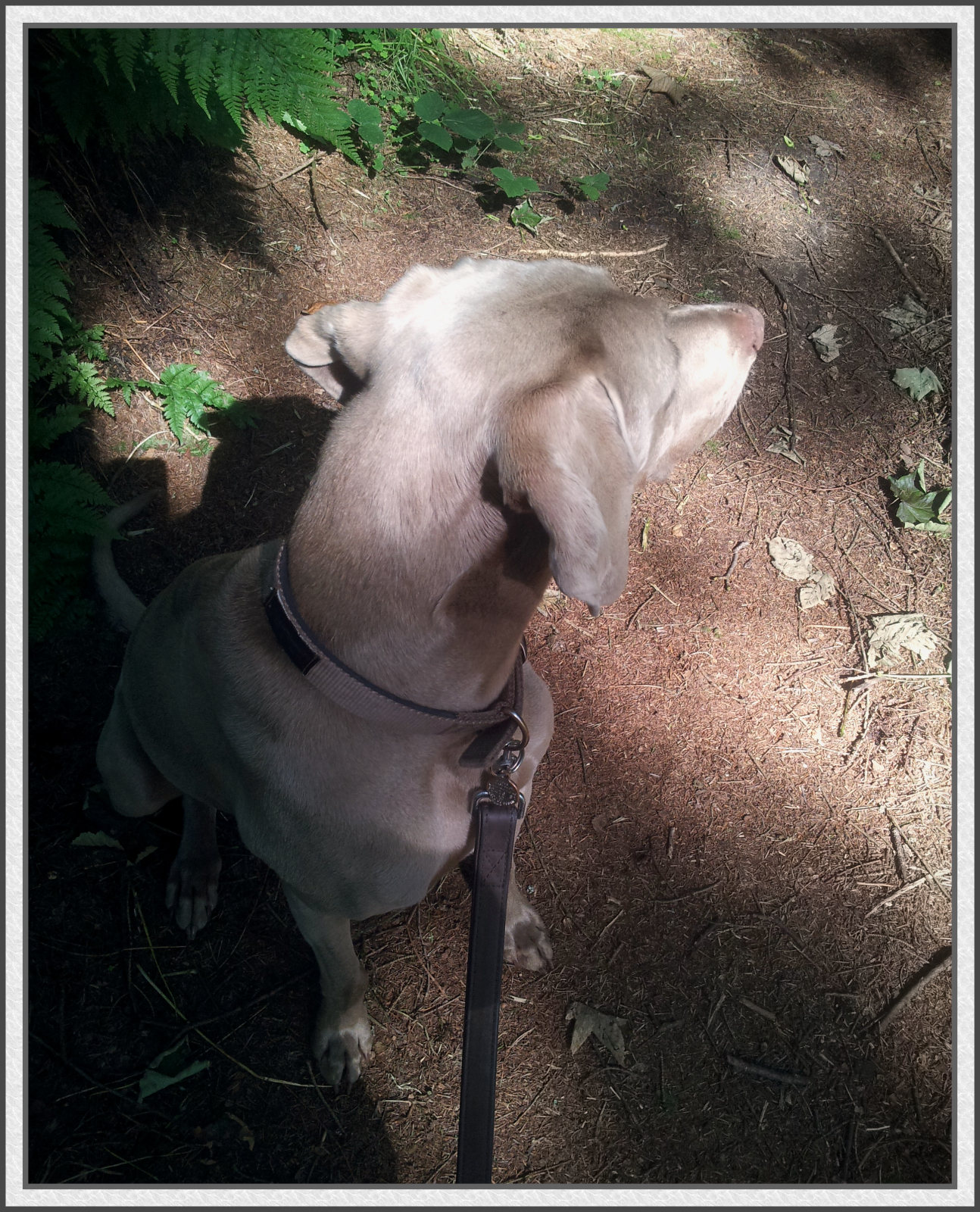
It appears to be summer – too hot for me, and even Dog doesn’t seem to like it that much, taking to lying in the hall in the middle of the house to stay cool. Walkies is best done in the woodland where it stays pleasantly cool and the light is beautifully dappled.
Passing by
Around the harbour
Customized Android
A few days ago, my regular mobile came back from being repaired, for the second time. I mentioned that I’d flashed a custom ROM on it – this being the Ultimate GT-N7000 XXLT4 JellyBean 4.1.2 image.
The past couple of evenings have been happily spent tweaking all the settings and installing apps, both new and old. First, I settled on ADW.Launcher as Home replacement of choice. Previously, I had been using Folders to categorize apps, but was not entirely satisfied with the classification (Social and Photo were obvious, but a lot of apps were mundane or administrivia, with varying degrees of usefulness); this time, I’ve settled for 3 screens ordered by purpose: instant-access on the default (middle) screen; Android admin apps on the left; games, audio/video and organization on the right.
Installing Titanium Backup has the side-effect that I could uninstall system apps, most notably some of the Samsung bloatware that slowed me down enormously previously. (S Notes? Why does that even exist?)
Other apps of note:
- I used to use Lookout as general anti-virus, but have been experimenting with AVG on the Hero while I waited for the Note to come back; it seems to have stuck.
- I’d never investigated ES File Explorer / Manager before; very pleasantly surprised to discover it has network functions (browsing FTP servers, etc) and libraries for one’s media, so that’s staying.
- Not playing games very often, I settled for rather conventional chess, reversi and thought maybe I’d try learning Go as well. (That’ll be a challenge and a half.)
- Geographical apps: Google Maps and My Tracks for GPS logging while I’m out, Foursquare for annoying everyone with checkins
- Social stuff: Browsing and reading news happens in Flipboard; for posting, I prefer one app to handle both Facebook and Twitter, and these days that app is Seesmic. WordPress allows me to blog here whilst on the move.
- Photography apps: a lot of my work on this blog is with HDR Camera+, which works nicely but Camera HDR Studio looks promising modulo the clunky-kiddie user interface. Post-processing happens in Aviary.
- One of the useful features of the Ultimate custom ROM is the ability to switch USB into mass-storage mode, something I’d not seen before. For us Linux users, this is much more useful than PTP or MTP. However, as a hang-over from days of Samsung bloatware, I use Airdroid for offloading files.
- For a keyboard, I find Swype has smooth sliding and tends to have the various symbols and punctuation in the right places.
The background image is a photo I took of tall birch trees silhouetted against an orange sunset, taken on the patio where we used to live in Argyll.
